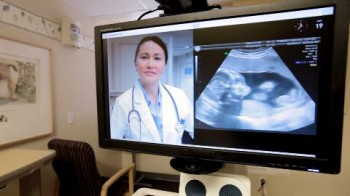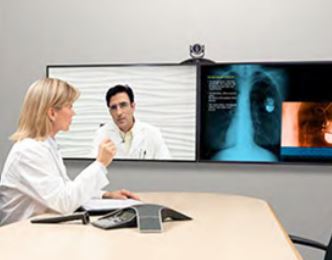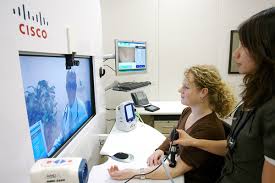Telemedicine: Are we comfortable with remote care for patients?

One of the biggest challenges in telehealth is managing the expectations of patients receiving care. Traditionally hands-on healthcare activities such as using equipment for monitoring heart rate and taking blood pressure measurements can now be done without “being there” and providing this care from a distance is already well engrained into our healthcare practices, even if patients are not yet 100% comfortable with the idea.
“We now have the ability to do physical exams through the use of peripheral technology. We can actually look in the back of someone’s throat, we can look in their ears, listen to their heart and lung sounds as well as their abdominal sounds.”
We are used to personal, direct interaction from doctors, nurses and care assistants, but although the addition of video conferencing and remote delivery of healthcare services have been strongly proven as a vital and highly valuable addition to the NHS and across the healthcare sector, especially to provide medical assistance and services in remote locations, it’s still a challenge to convince patients they will get the same comfort, service and trust over video as they would in a direct setting.
The number of annual telemedicine visits in the U.S. rose from around 200 to more than 200,000, between 2005 and 2017.
So how do we manage the emergence of digital doctors? How can we change our expectations or does the delivery need to change itself? With more than 70% of healthcare providers using remote digital medicine in some shape or form, specifically for mental health support, remote monitoring of patients and follow up to assessments, it’s vital we find ways to improve the perception that some parts of care are inherently lost when a screen is placed between the caregiver and the patient.
Advanced Training to Build Relationships
New training programmes for medical professionals within the USA aim to improve the remote interaction, such as training for recognising virtual physical cues and limiting distractions within the shot, so that nurses and doctors can better build relationships via the remote technology. However, although improvements to the remote communications can be improved, it’s inevitable that some loss of human interaction will need to be made in return for the great benefits of telemedicine services.
although improvements to the remote communications can be improved, it’s inevitable that some loss of human interaction will need to be made in return for the great benefits of telemedicine services.
This kind of training seems like the best way to improve the challenge of remote interaction. Ultimately, however, it seems likely that patients will simply accept the loss of a little human interaction as a necessary sacrifice in return for increased convenience, accessibility, and effectiveness of medical services.
An Additional Service, not a Replacement
Although there are many studies to suggest that many aspects of healthcare can be carried out via remote communications, it’s probably best to think of these tele-medicine services as an additional service, not a replacement service.
Being able to quickly gain access to a medical expert for those based in remote areas with no local doctors could be lifesaving. It could also save much time and money if the travel and visit to the doctors would not be beneficial at that time. Similarly, those patients feeling isolated (for example, half of women over 75 in the USA live alone), with reduced mobility or with mental health conditions that sees individuals spend less time outside the home, additional communication via video link could be a vital part of keeping people connected in a way that wouldn’t be had if only in-person visits were possible.
could be lifesaving. It could also save much time and money if the travel and visit to the doctors would not be beneficial at that time. Similarly, those patients feeling isolated (for example, half of women over 75 in the USA live alone), with reduced mobility or with mental health conditions that sees individuals spend less time outside the home, additional communication via video link could be a vital part of keeping people connected in a way that wouldn’t be had if only in-person visits were possible.
Despite the challenges of telemedicine and the way we have been programmed to accept in-person care as being superior to remote, the benefits of video conferencing for telemedicine have been proven time and time again as a way to improve on the care we can give to patients and the elderly (see “Video Conferencing Grandparents”). With the right training, tools and attitude, it’s likely that the trend of remote medicine will continue to rise to become the main communication path within our future healthcare systems.
More information?
Take a look at our solutions for healthcare, or take a look at our customer story about improving MDT Rooms in the Brighton and Sussex NHS University Hospital. You may also be interested in:
- Improving Mental Health Services in the NHS with Video Technology
- Improving Cardiac Diagnosis with Video Collaboration Technology
- NHS Reform: Improving Education & Training in the NHS
